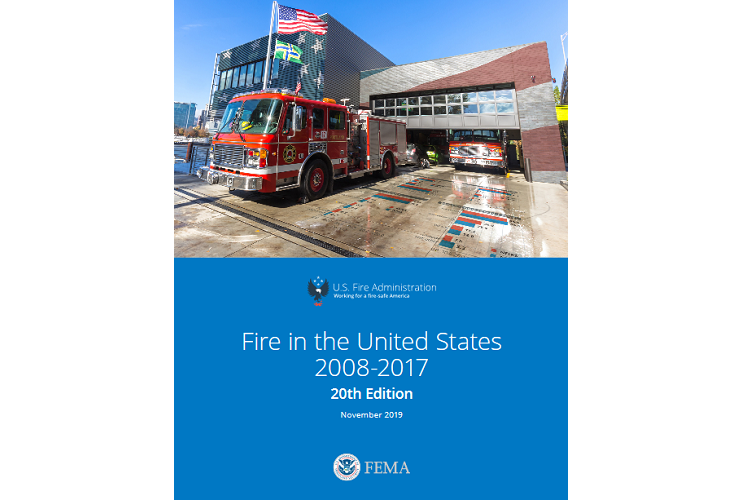
Trends in fire deaths have increased

United States Fire Administration
The National Fire Data Center (NFDC) of the U.S. Fire Administration (USFA) periodically publishes “Fire in the United States,” a statistical overview of the fires in the United States, with the focus on the latest year in which data were available. This report provides the fire service and others with information that motivates corrective action, sets priorities, targets specific fire programs, serves as a model for state and local analyses of fire data, and provides a baseline for evaluating programs.
The primary source of data is from the USFA’s National Fire Incident Reporting System (NFIRS). The National Fire Protection Association (NFPA) annual survey results, mortality data from the National Center for Health Statistics (NCHS), data from state fire marshals’ offices or their equivalents, population data from the U.S. Census Bureau, and inflation adjustments from the Bureau of Labor Statistics’ Consumer Price Index (CPI) are also used. Because of the time it takes for states to submit data to the USFA from the thousands of fire departments that participate in the NFIRS, then obtain corrections and edit the data, and analyze and display the results, the publication lags behind the date of data collection. Fortunately, the fire problem does not change very rapidly, so the data is usually quite representative of the situation in the year of publication as well.
This 20th edition covers the 10-year period from 2008 to 2017, with a primary focus on 2 017.[1] The report addresses the overall national fire problem. Detailed analyses of the residential and nonresidential fire problem, firefighter casualties, and other subsets of the national fire problem are not included. These topic-specific analyses are addressed as separate, stand-alone publications.
Fire departments in the U.S. responded to over 1.3 million fire incidents in 2017.[2] Each year, thousands of Americans die, tens of thousands of people are injured and property losses reach billions of dollars as a result of the U.S. fire problem.
There are huge indirect costs of fire as well, including temporary lodging, lost business revenues, medical expenses and psychological damage. To put this into context, the annual losses from floods, hurricanes, tornadoes, earthquakes and other natural disasters combined in the U.S. average just a fraction of those from fires.[3] The public, the media and local governments are generally unaware of the magnitude and seriousness of the fire problem and how it affects individuals and their families, communities and the nation.
Annual deaths from fire in the U.S. were estimated at 12,000 in 1974, the year in which the USFA was established. At that time, a goal was set for reducing this number by half within a generation. This goal was met.[4] By 2012, estimates of civilian deaths were at their lowest level (2,855). Over recent years, trends in fire deaths have increased. By 2017, the estimate of fire deaths was 3,400 — 19% higher than it was in 2012, but comparable to the estimate in 2007 when the number of fire deaths was 3,430.[5,6]

